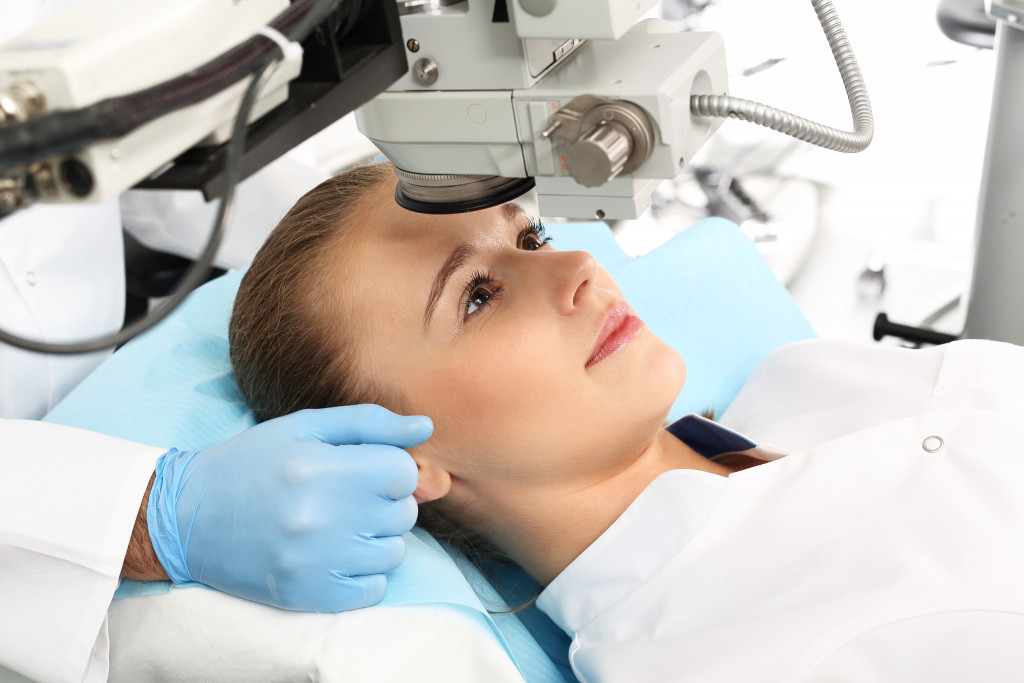- Cataracts are an eye condition caused by clouding of the lens, commonly caused by aging and UV radiation exposure.
- Other causes can include injury or trauma to the eye, extended use of certain medications such as steroids, and diabetes.
- Diagnosis usually involves a comprehensive eye exam with possible imaging tests.
- Treatment usually involves surgery to replace the cloudy lens with an artificial intraocular lens.
Cataracts are very common, especially among older adults, and can cause blurry or hazy vision, increased sensitivity to light, difficulty seeing at night, and double vision in one eye.
The American Academy of Ophthalmology has disclosed that the older one gets, the more likely it is for one to develop cataracts. There are numerous potential reasons this eye condition may occur; studies have shown that approximately half of all Americans above 80 years old experience a degree of cataract formation. Below is an overview of cataracts, including what causes them and how they’re diagnosed and treated.
What Causes Cataracts?
Cataracts are a common vision problem, but many people don’t understand what causes them. It’s important to be aware of the possible causes so you can discuss your risk with your eye doctor and stay on top of any changes in your vision. Here are the common causes of this eye condition:
Aging
The most common cause of cataracts is aging. As we age, the protein that makes up our lens begins to break down and clump together until it clouds our vision. While this type of cataract is the most common cause, it is also the slowest-growing type and may not need treatment for years or decades.
Ultraviolet Radiation Exposure
Ultraviolet (UV) radiation from sunlight or tanning beds can damage the lens over time, leading to cataracts or other vision problems like macular degeneration and photokeratitis (sunburned eyes). Wearing sunglasses blocking UV rays can help protect your eyes from this damage.
Trauma or Injury to the Eye
Injury or trauma to the eye can lead to cataracts as well. This could include a blow to the head that affects the eye area, certain eye surgeries, and even taking certain medications such as steroids for extended periods. If you experience any injury to your eyes, it is important to speak with an ophthalmologist right away – they will be able to tell you if there is any risk for developing a cataract due to that trauma or injury.
Diabetes
Diabetes can increase one’s risk of developing cataracts because diabetes affects blood flow throughout the body – including in our eyes. If blood sugar levels are not kept under control, more proteins are broken down than usual, which leads to increased clouding in our lenses and eventually increases our risk of developing a cataract.
How Are Cataracts Diagnosed?
Your doctor will perform a comprehensive eye exam to diagnose a cataract. The exam may include tests such as visual acuity test (measuring how well you see letters on a chart), refraction (determining your eyeglass prescription) and dilated eye exam (using drops to widen your pupils). In some cases, imaging tests may be used to get a better look at the inside of your eyes.
Treatments for Cataracts
In most cases, an eye operation is the only way to correct cataracts and restore clear vision. During surgery, which usually takes about 30 minutes per eye, your surgeon will remove the cloudy lens from your eye and replace it with an artificial intraocular lens (IOL). Depending on your particular condition and needs, you may need glasses or contacts after surgery to help improve your vision even more.
Additionally, several non-surgical treatments can help reduce symptoms while you wait for surgery if needed. These treatments include wearing sunglasses outdoors or using special lenses blocking ultraviolet rays from the sun.
Prevention Tips
Fortunately, there are some steps you can take to help reduce your risk for developing cataracts. Wearing sunglasses with UV protection outdoors is a crucial way to protect your eyes from ultraviolet radiation from the sun that could lead to cataract formation.
You should also quit smoking if you currently smoke and manage any underlying medical conditions, such as diabetes, that could contribute to your risk of developing cataracts. Eating healthy foods rich in antioxidants—such as dark green leafy vegetables—is another way you can help keep your eyes healthy and reduce your risk of developing cataracts.
Cataracts often develop slowly over time and can initially go unnoticed until they become severe enough to affect vision quality. If you experience any changes in your vision—such as blurry or hazy—it’s important to talk with an optometrist immediately so they can determine whether you have a cataract or another condition requiring treatment. With proper diagnosis and treatment options available today—including surgery—cataract patients are able to regain clear vision quickly and effectively.

